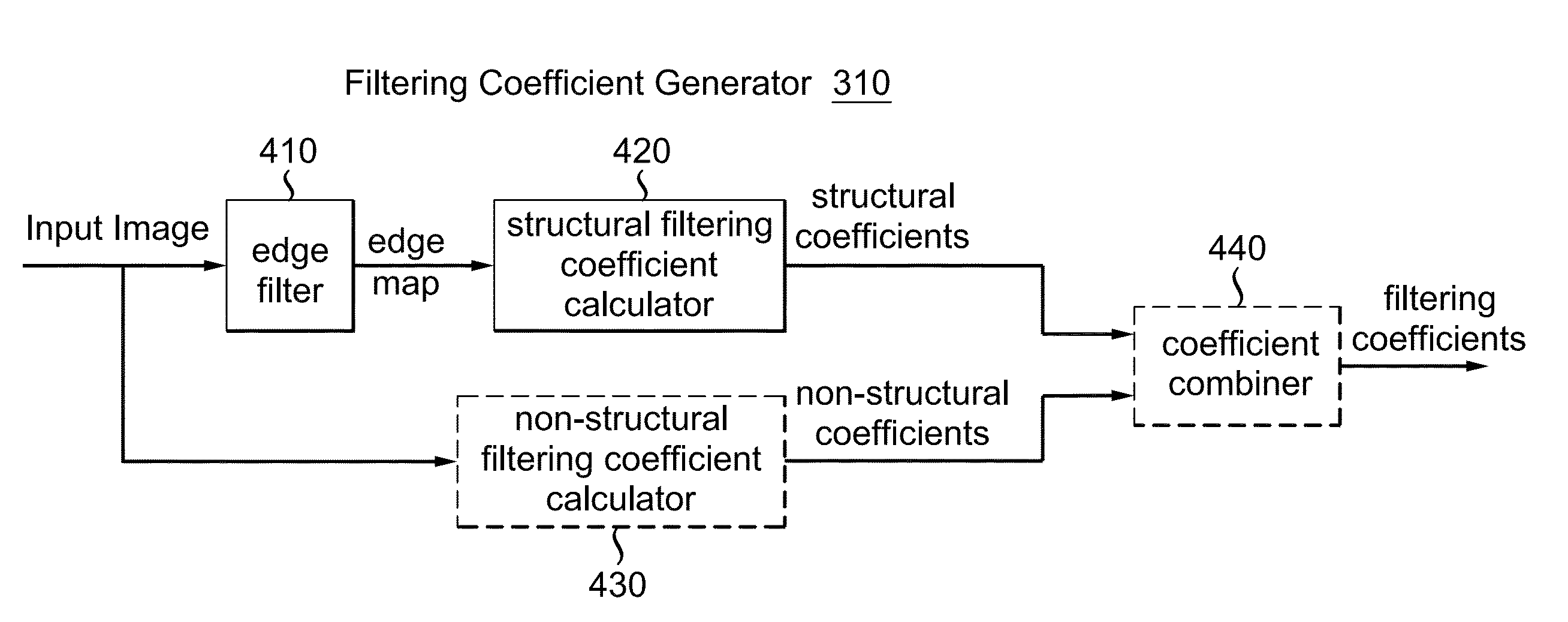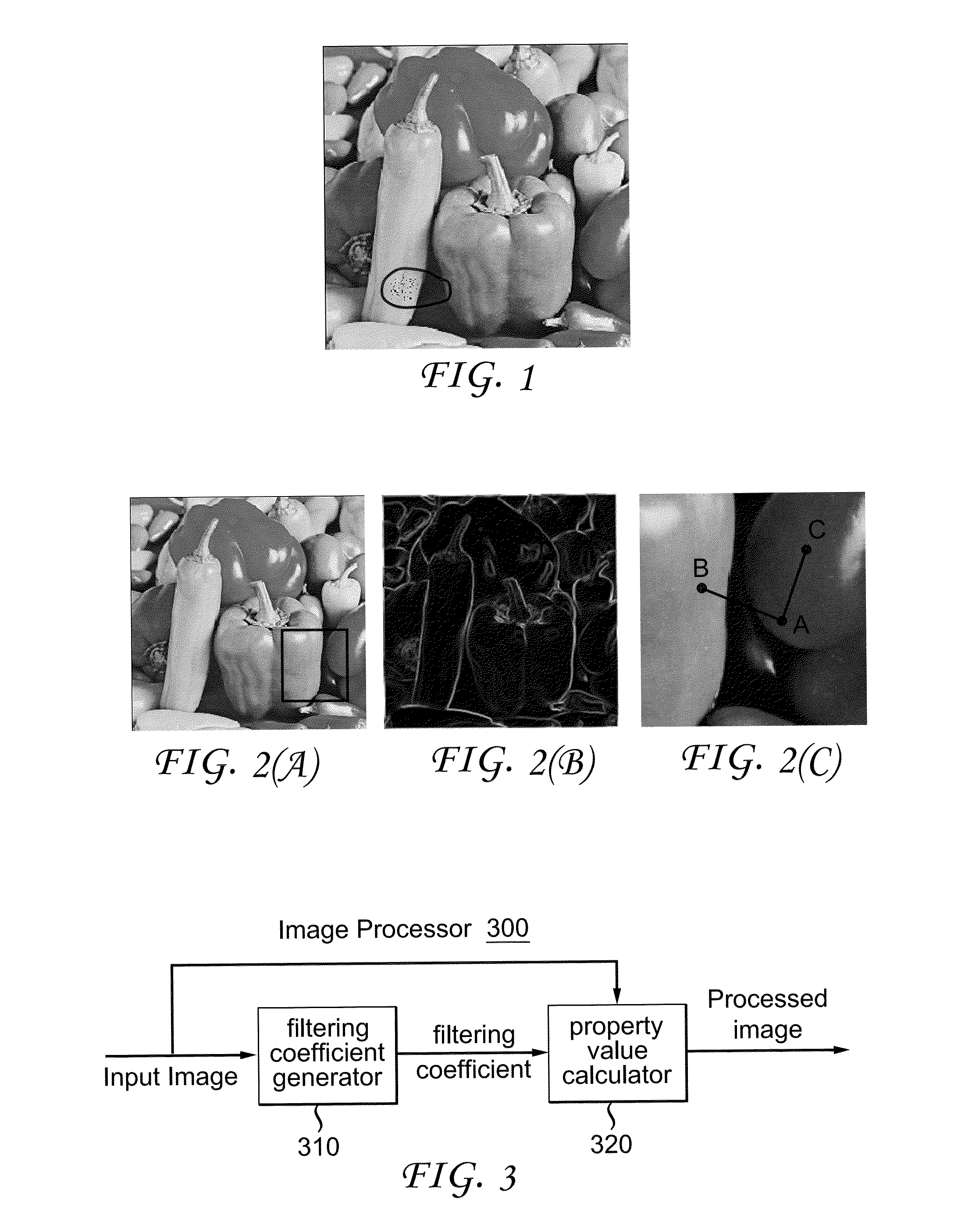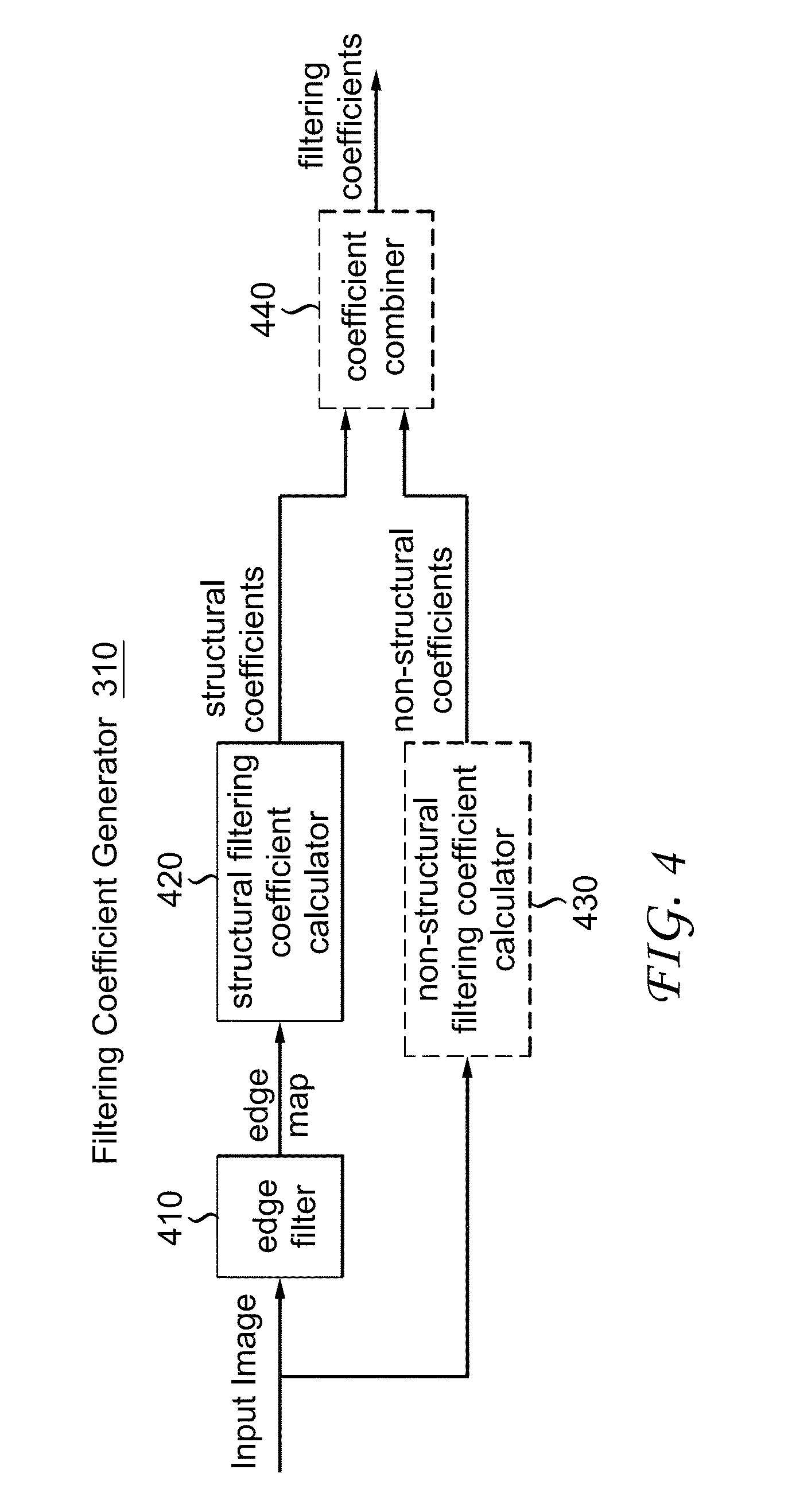Image filtering based on structural information
a structural information and image filtering technology, applied in the field of image processing, can solve the problems of insufficient prior solution, inapplicability of observation, and inability to apply observation,
- Summary
- Abstract
- Description
- Claims
- Application Information
AI Technical Summary
Benefits of technology
Problems solved by technology
Method used
Image
Examples
Embodiment Construction
[0028]In the present invention, a solution to processing an image is provided. By exploring the structural information of an image, effective and efficient image filtering is achieved. FIG. 2 illustrates the benefits of considering structural information in image filtering. FIG. 2(A) shows an original image. FIG. 2(B) shows the structural information of the original image which is determined by edges. FIG. 2(C) is an enlarged view of the rectangle area in FIG. 2(A). In FIG. 2(C), pixel A denotes a pixel to be restored, called a target pixel; pixel B and C denote two pixels used to reconstruct A, called contributing pixels. Pixels B and C have equal distance to A. As shown in FIG. 2(B), images can be divided into a number of regions which are separated / defined by edges. These regions describe the structure of the image. When determining the filtering coefficients for a given target pixel, it is desirable to give a higher weight to the contributing pixels in the same region as the tar...
PUM
 Login to View More
Login to View More Abstract
Description
Claims
Application Information
 Login to View More
Login to View More - R&D
- Intellectual Property
- Life Sciences
- Materials
- Tech Scout
- Unparalleled Data Quality
- Higher Quality Content
- 60% Fewer Hallucinations
Browse by: Latest US Patents, China's latest patents, Technical Efficacy Thesaurus, Application Domain, Technology Topic, Popular Technical Reports.
© 2025 PatSnap. All rights reserved.Legal|Privacy policy|Modern Slavery Act Transparency Statement|Sitemap|About US| Contact US: help@patsnap.com



